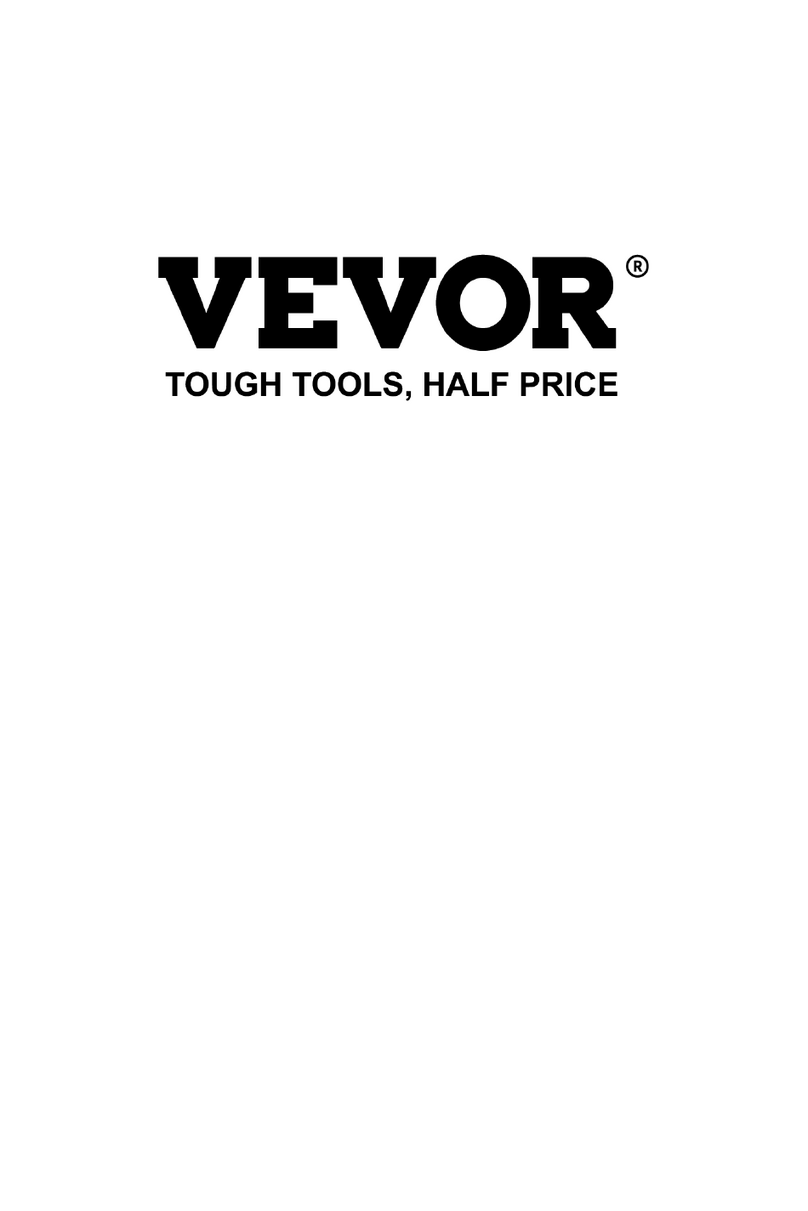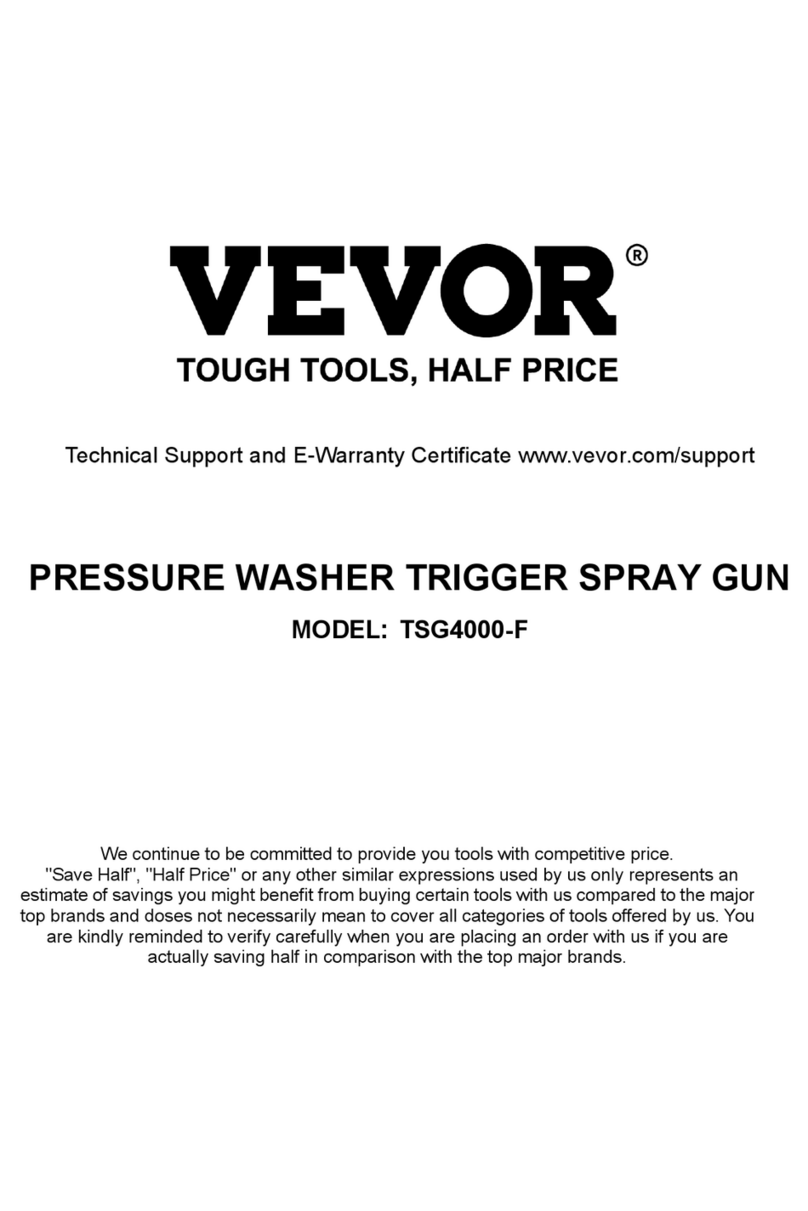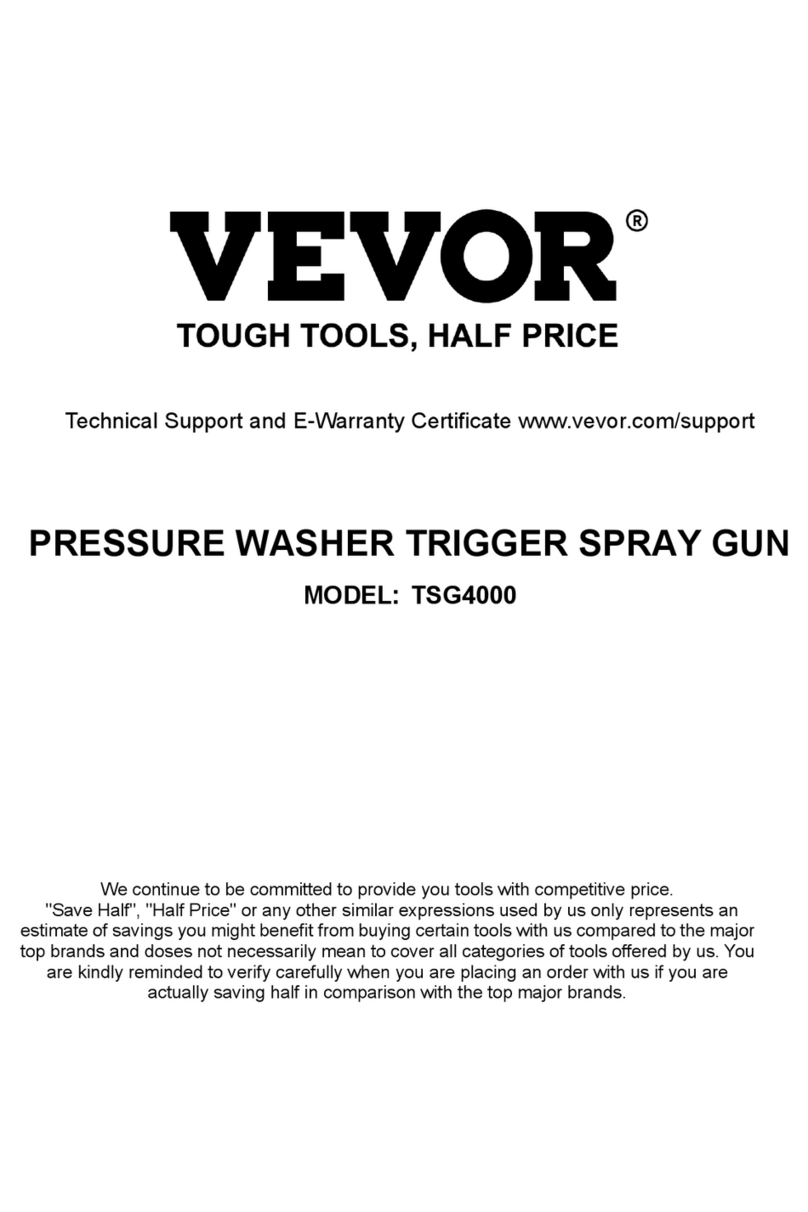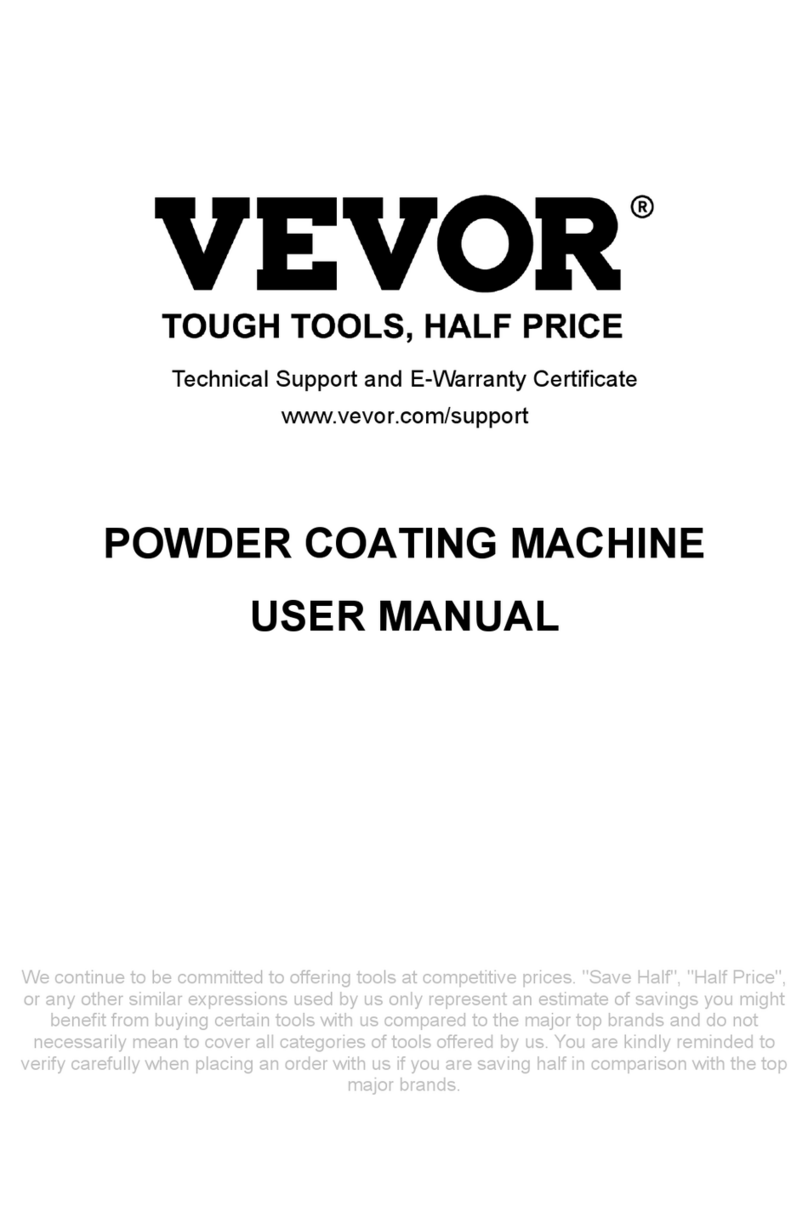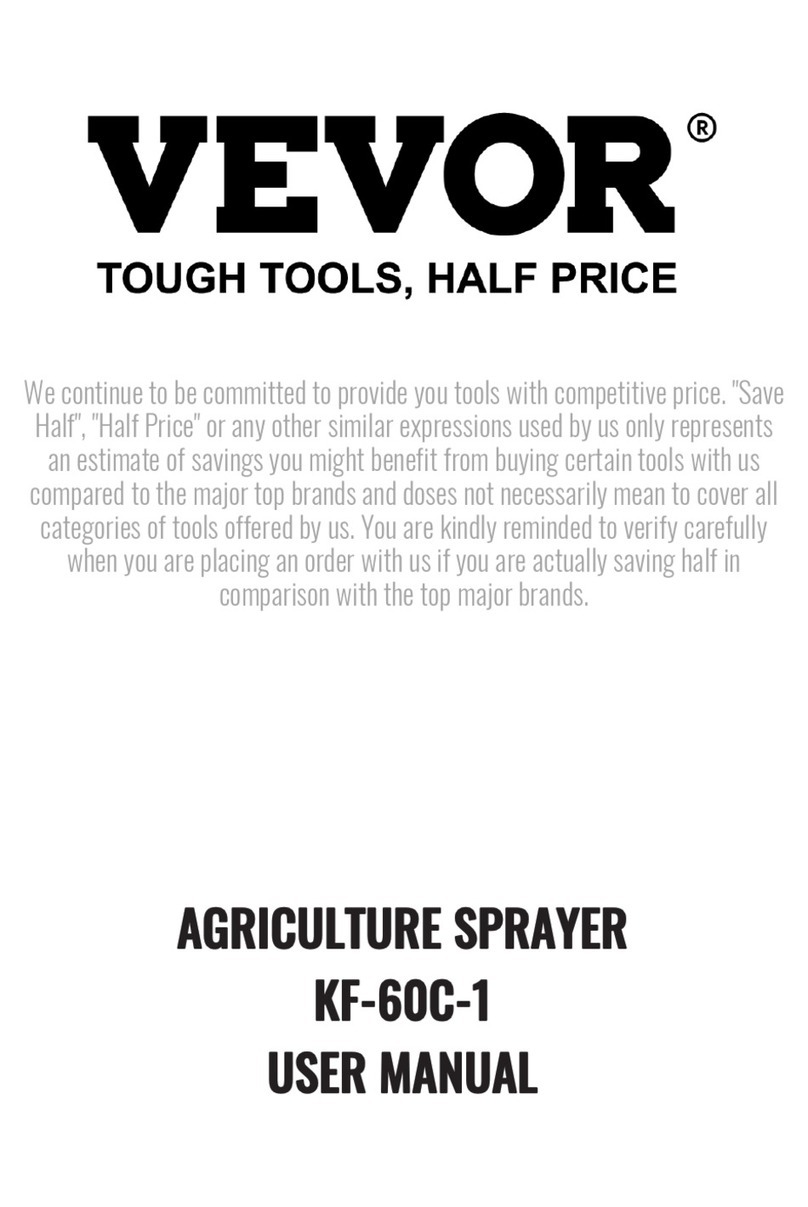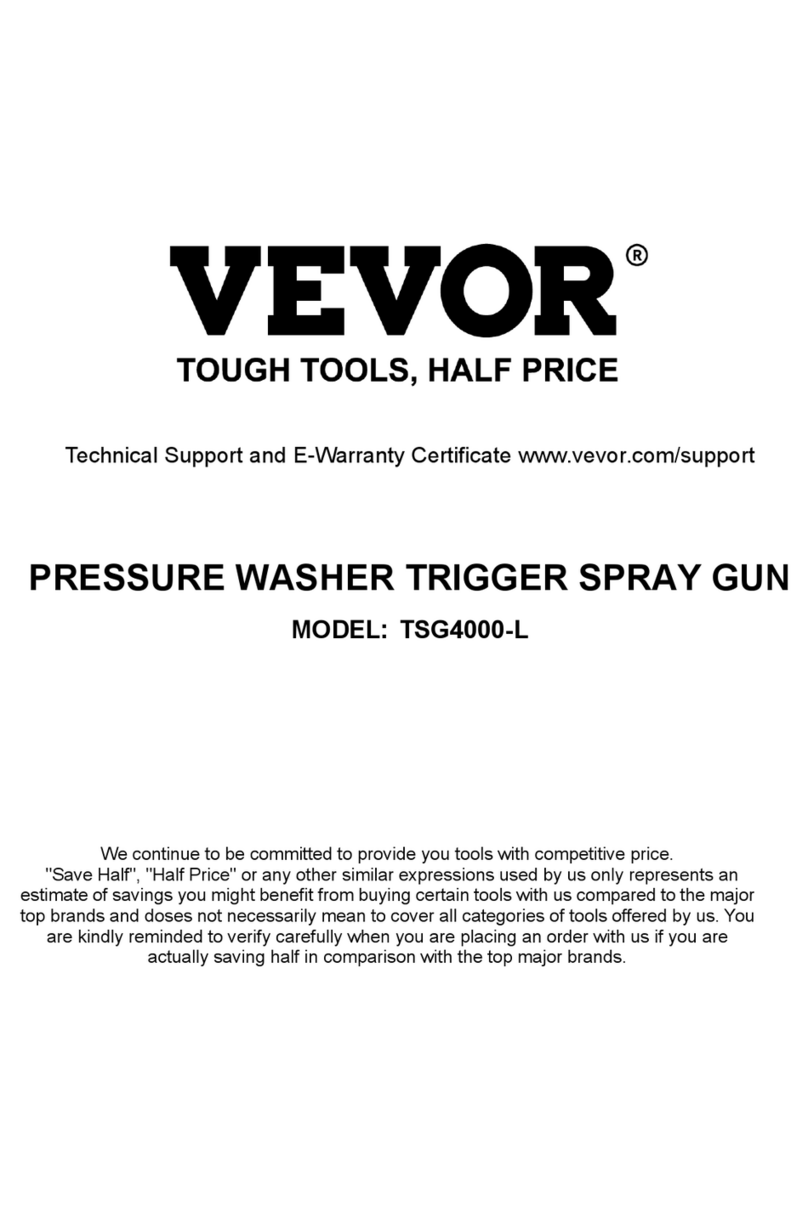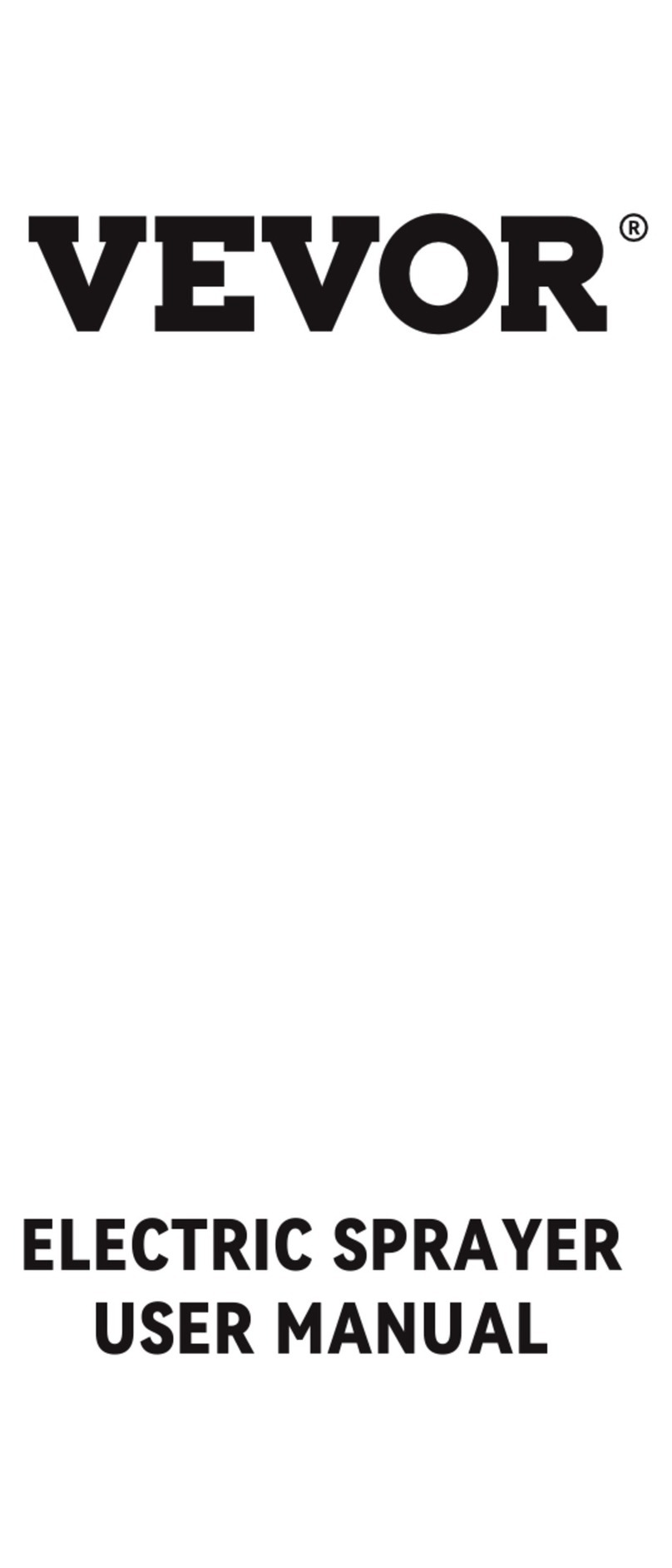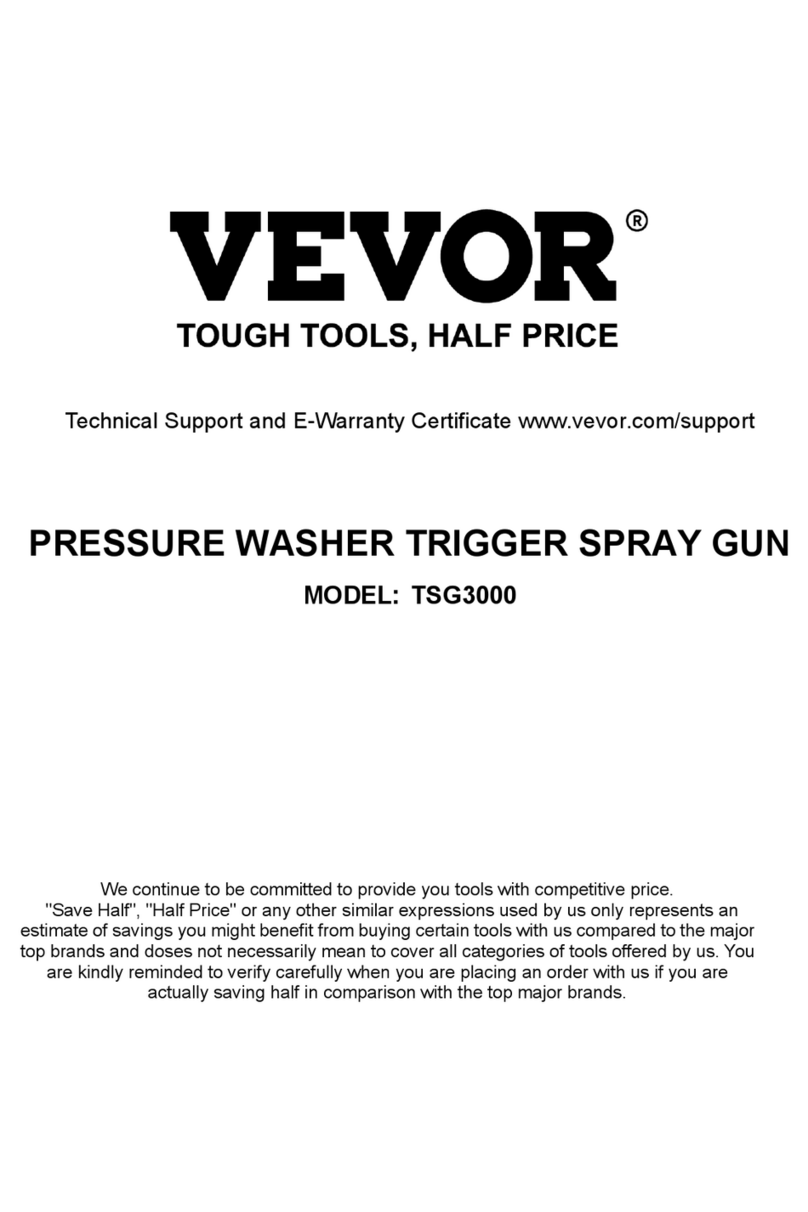
IMPORTANT SAFETY INSTRUCTIONS
SAVE THESE INSTRUCTIONS – To reduce the risks of fire or explosion,
electrical shock, and the injury to persons, read and understand all instructions
included in this manual. Be familiar with the controls and the proper usage of the
equipment.
WARNING – To reduce the risk of fire or explosion:
1. Do not spray flammable or combustible materials near an open flame or sources
of ignition such as cigarettes, motors, and electrical equipment.
2. For units intended for use with only water-based materials - Do not spray or
clean with flammable liquids. For use with water-based liquids only.
3. For units intended for use with only water-based or mineral spirit-type materials
with a minimum flash point of 38°C) - Do not spray or clean with liquids having a
flash point less than 38°C.
4. Paint or solvent flowing through the equipment is able to result in static
electricity. Static electricity creates a risk of fire or explosion in the presence of
paint or solvent fumes. All parts of the spray system, including the pump, spray
gun, and objects in and around the spray area shall be properly grounded to
protect against static discharge and sparks.
5. Do not use a paint or a solvent containing halogenated hydrocarbons. See
operating instructions for examples of these types of materials.
6. Keep spray area well ventilated. Keep a good supply of fresh air moving through
the area. Keep pump assembly in a well-ventilated area. Do not spray pump
assembly.
7. Do not smoke in the spray area.
8. Do not operate light switches, engines, or similar spark producing products in
the spray area.
9. Keep area clean and free of paint or solvent containers, rags, and other
flammable materials.

